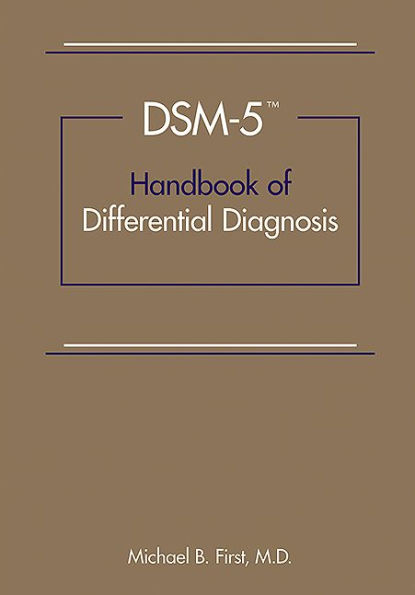The handbook offers an assortment of approaches to differential diagnosis, and a number of features designed to benefit clinicians in the exam room, including:
• A six-step framework for diagnosing patients that proceeds from determining if the symptom is real to establishing the boundary between disorder and normality, with intermediary steps to rule out substance etiology and medical conditions, as well as to determine the primary disorder and to differentiate adjustment disorders from other mental disorders.• Twenty-nine symptom-oriented decision trees that provide detailed decision points to facilitate the process of generating the differential diagnosis based on the presenting symptoms and eliminate formulating premature conclusions.• Sixty-six differential diagnosis tables, one for each of the most important DSM-5 disorders, cross-referenced with the terminal branches of the decision trees presented in the handbook to provide a head-to-head comparison of each disorder, highlighting similarities and differences.• The DSM-5 classification, to facilitate coding and to provide an overview of all of the DSM-5 diagnoses that must be considered in formulating a differential diagnosis.• Alphabetical indexes of the decision trees and differential diagnosis tables to help readers readily locate desired material.
DSM-5 Handbook of Differential Diagnosis provides a comprehensive overview of the process of diagnosing DSM-5 disorders while serving as a reference guide to assist in the differential diagnosis of individual patients. The handbook is an invaluable addition to the DSM-5 collection and an important contribution to the mental health profession.
The handbook offers an assortment of approaches to differential diagnosis, and a number of features designed to benefit clinicians in the exam room, including:
• A six-step framework for diagnosing patients that proceeds from determining if the symptom is real to establishing the boundary between disorder and normality, with intermediary steps to rule out substance etiology and medical conditions, as well as to determine the primary disorder and to differentiate adjustment disorders from other mental disorders.• Twenty-nine symptom-oriented decision trees that provide detailed decision points to facilitate the process of generating the differential diagnosis based on the presenting symptoms and eliminate formulating premature conclusions.• Sixty-six differential diagnosis tables, one for each of the most important DSM-5 disorders, cross-referenced with the terminal branches of the decision trees presented in the handbook to provide a head-to-head comparison of each disorder, highlighting similarities and differences.• The DSM-5 classification, to facilitate coding and to provide an overview of all of the DSM-5 diagnoses that must be considered in formulating a differential diagnosis.• Alphabetical indexes of the decision trees and differential diagnosis tables to help readers readily locate desired material.
DSM-5 Handbook of Differential Diagnosis provides a comprehensive overview of the process of diagnosing DSM-5 disorders while serving as a reference guide to assist in the differential diagnosis of individual patients. The handbook is an invaluable addition to the DSM-5 collection and an important contribution to the mental health profession.

DSM-5® Handbook of Differential Diagnosis
338
DSM-5® Handbook of Differential Diagnosis
338Paperback

Product Details
| ISBN-13: | 9781585624621 |
|---|---|
| Publisher: | American Psychiatric Association Publishing |
| Publication date: | 11/19/2013 |
| Pages: | 338 |
| Product dimensions: | 8.90(w) x 12.70(h) x 0.90(d) |
| Age Range: | 18 Years |
